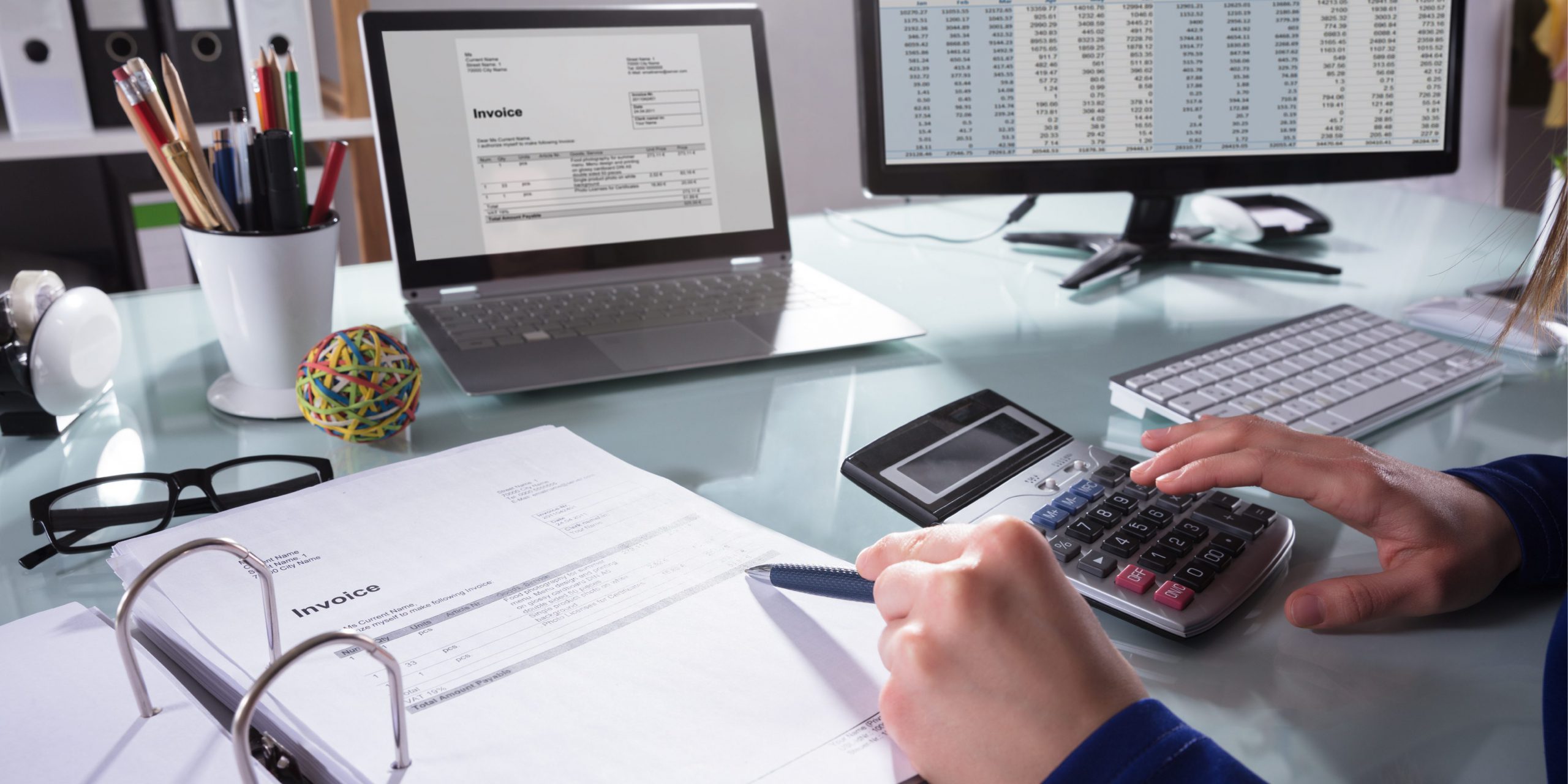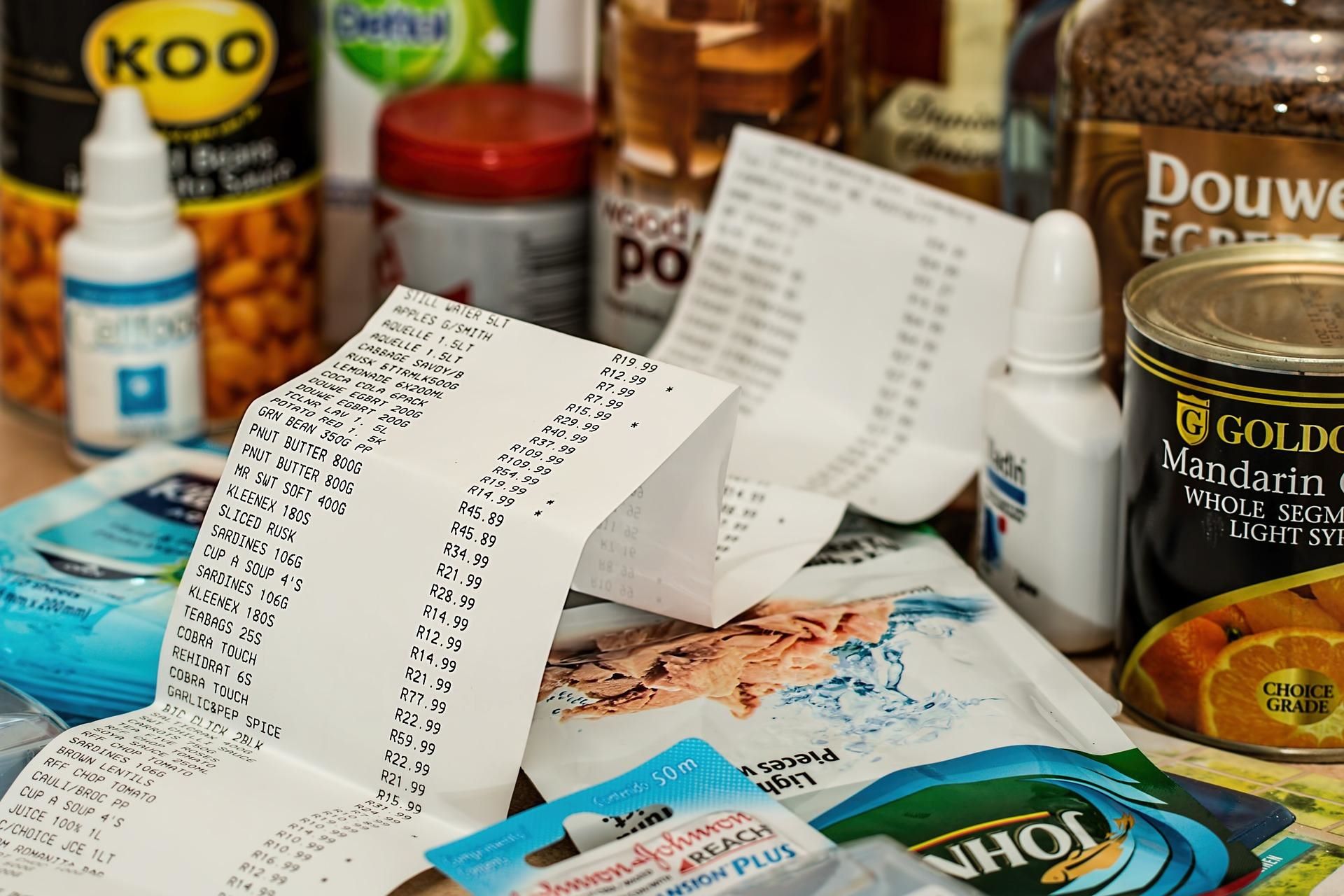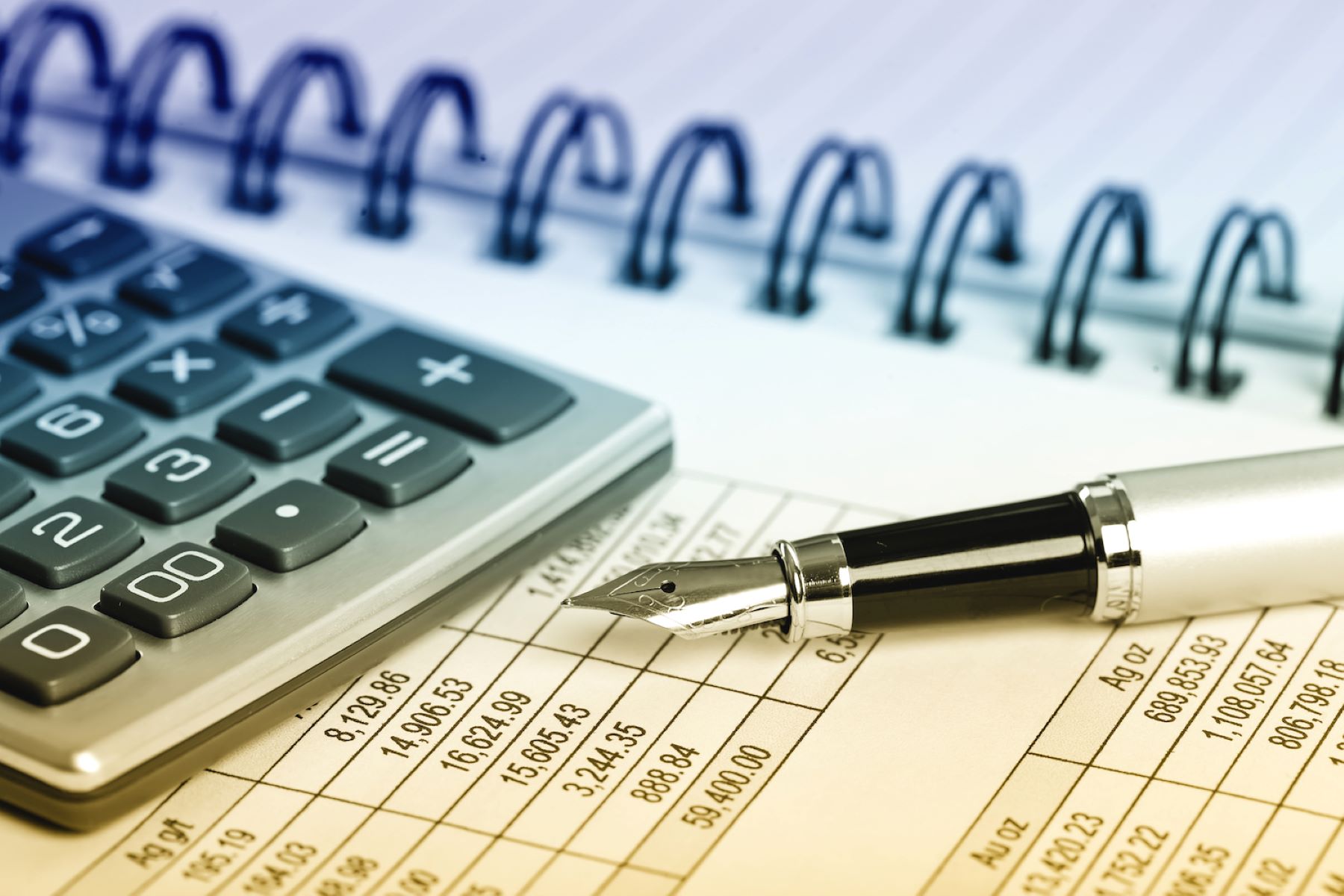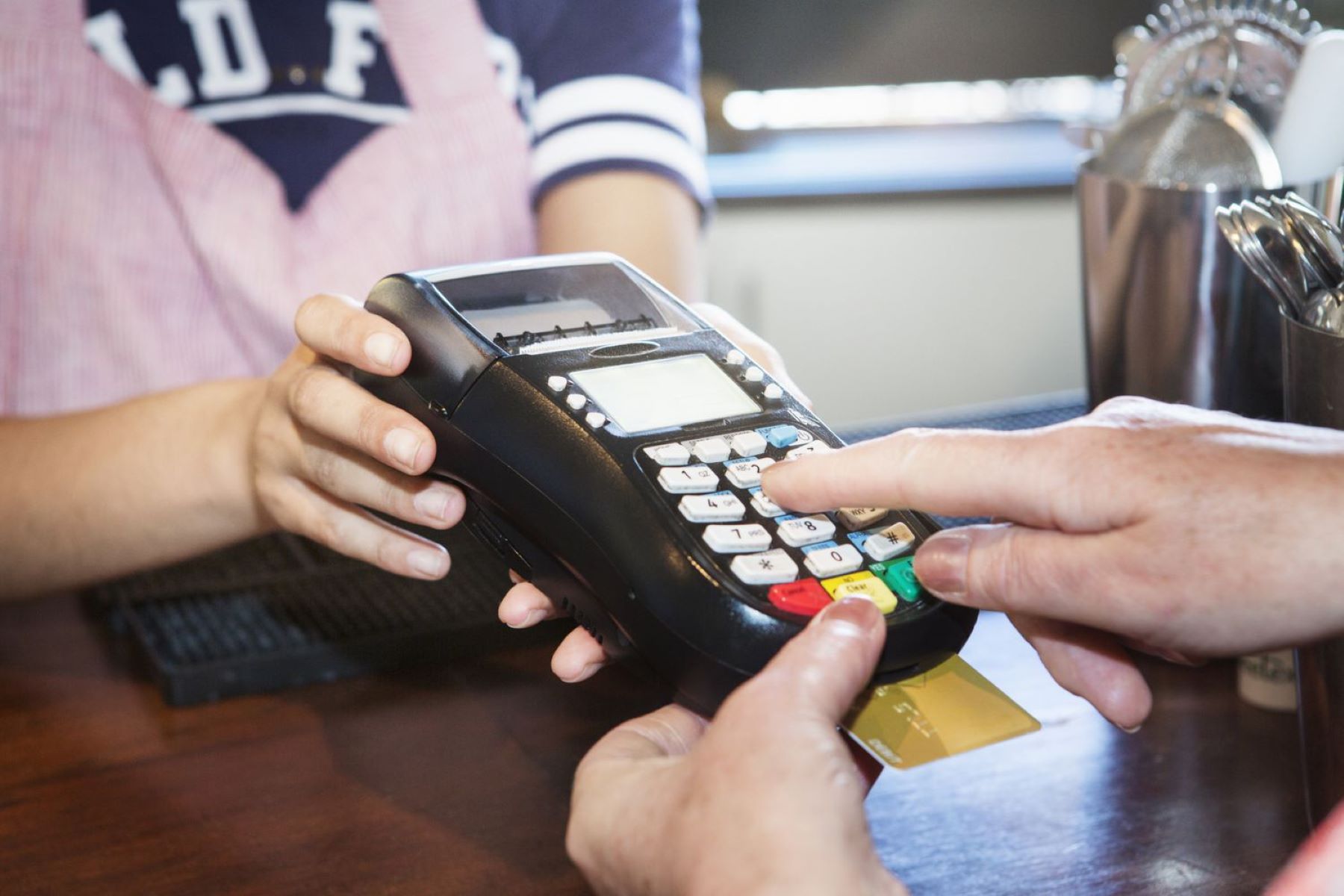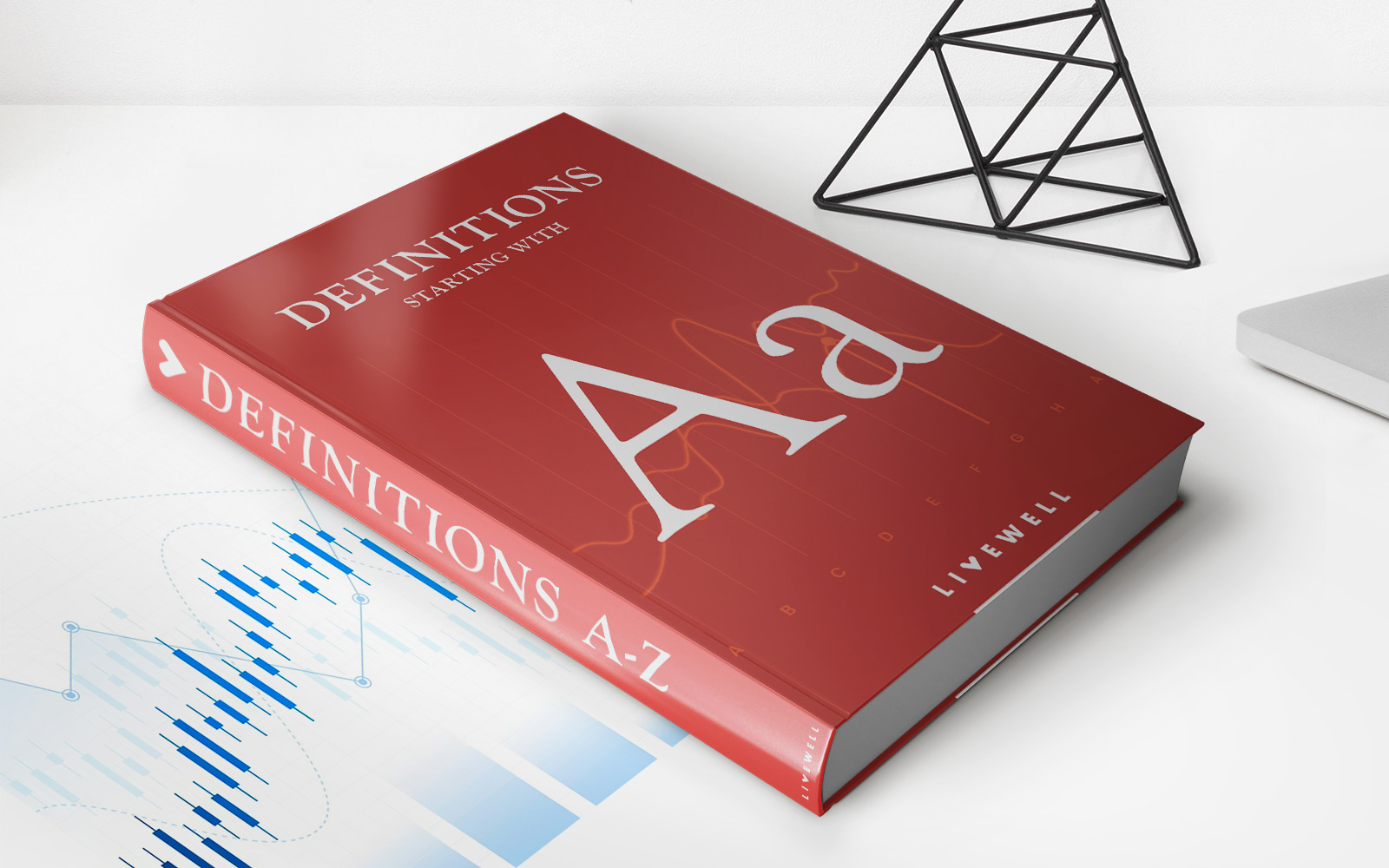

Finance
How To Record Tips In Accounting
Published: October 13, 2023
Learn how to record tips in accounting and manage your finances effectively with this comprehensive guide. Increase your financial knowledge and improve your business's financial health today.
(Many of the links in this article redirect to a specific reviewed product. Your purchase of these products through affiliate links helps to generate commission for LiveWell, at no extra cost. Learn more)
Table of Contents
Introduction
Welcome to the world of accounting, where numbers reign supreme and every transaction must be recorded with precision. In the realm of finance, accuracy is key, and this holds true even when it comes to recording tips. Tips, the additional amounts of money given by customers to service providers, are an important aspect of many industries, such as hospitality, food services, and personal services.
Recording tips accurately in accounting is not only essential for maintaining the integrity of financial records but also for ensuring that service providers receive the compensation they deserve. This article will guide you through the process of properly recording tips in accounting, discussing different methods and tools available to make the process efficient and accurate.
Whether you’re a small business owner in the restaurant industry, a self-employed freelancer, or an accountant looking for guidance, understanding how to record tips is crucial. Inaccurate or incomplete tip recording can lead to financial discrepancies, compliance issues, and even legal problems. It’s vital to establish a reliable system for tracking tips and incorporating them into your overall accounting process.
In this article, we will explore various methods of recording tips, including manual recording, electronic methods, and the use of specialized tips accounting software. We will also delve into the importance of accurate tip recording and provide tips for ensuring your tip recording practices are both efficient and compliant.
So, whether you’re a server in a bustling restaurant or an accountant looking to advise clients, let’s dive into the world of tips in accounting and discover the best practices for recording them accurately.
Understanding Tips in Accounting
Before we delve into the various methods of recording tips in accounting, it’s essential to have a clear understanding of what tips are and how they are treated in the financial world.
Tips refer to additional amounts of money given by customers to service providers as a token of appreciation for their excellent service. While tips are typically associated with industries such as restaurants, bars, and hotels, they can also be relevant in other sectors where customer service is a significant component, such as taxi services, hair salons, and tour guides.
From an accounting perspective, tips fall under the category of revenue earned by the service provider. They represent income that must be recorded and included in financial statements for accurate reporting and analysis. In some cases, tips may also be subject to taxation and should be reported accordingly.
It’s important to note that tips are usually discretionary and not mandatory. Service providers do not have a legal right to expect tips, nor are customers obligated to give them. However, in many cases, tipping has become an established social norm, and customers often feel inclined to show their appreciation for exceptional service by leaving a gratuity.
Accounting for tips can be challenging due to their variable nature. Tips can vary greatly depending on factors such as the type of service, location, quality of service, and customer preferences. Therefore, accurately recording and accounting for tips requires careful attention to detail and consistent tracking methods.
Additionally, it’s crucial to differentiate between tips and other forms of income. Service providers who receive tips alongside their regular wages must be mindful of properly documenting and reporting these additional earnings to ensure compliance with tax regulations and to avoid potential issues.
In the following sections, we will explore different methods of recording tips in accounting. We will discuss manual methods, electronic recording, and specialized tips accounting software that can streamline the process and enhance accuracy. Let’s dive in and uncover the best practices for recording tips in accounting.
Different Methods of Recording Tips
When it comes to recording tips in accounting, there are several methods available, each with its own advantages and considerations. Let’s explore the different methods and determine which one might best suit your needs.
1. Manual Recording of Tips: This traditional method involves manually documenting tips received by service providers. It can be as simple as keeping a physical tip jar where cash tips are collected, along with a logbook for recording the amount and date of each tip. Alternatively, tips can be written down on a notepad or entered directly into a spreadsheet or accounting software.
While manual recording is straightforward, it can be time-consuming and prone to errors. Additionally, if you have multiple service providers or a busy establishment, manually tracking and tallying tips can become cumbersome and may increase the risk of misplacing or misrecording information.
2. Electronic Recording of Tips: With the advancement of technology, electronic methods of recording tips have become increasingly popular. This method involves using electronic devices such as point-of-sale (POS) systems or mobile payment apps to capture and record tips automatically.
POS systems can generate detailed reports that include tips received along with other sales data. These reports can be exported and integrated into accounting software for streamlined record-keeping. Mobile payment apps, such as those used for food delivery or ride-sharing, often have built-in features for customers to leave a tip, which is automatically recorded and added to the service provider’s earnings.
Electronic recording offers convenience, accuracy, and efficiency. It eliminates the need for manual data entry, reduces the risk of errors, and provides real-time insights into tip revenue. However, implementing electronic systems can involve initial setup costs and requires reliable hardware and software solutions.
3. Tips Accounting Software: Another option is to utilize specialized tips accounting software. These programs are designed specifically to handle tip recording and management. They often integrate with POS systems, mobile apps, and accounting software, offering a comprehensive solution for tip tracking.
Tips accounting software can automate the process of recording and calculating tips based on preset rules and guidelines. It can generate reports, analyze trends, and provide valuable insights into tip revenue. Additionally, some software platforms offer features like tip pooling, where tips are distributed among multiple service providers based on predetermined rules.
While tips accounting software can streamline the recording process, it may require a learning curve and additional investment. The choice to use specialized software depends on the complexity of your business operations and the volume of tip transactions you handle on a regular basis.
Ultimately, the method you choose to record tips will depend on your specific business needs, budget, and technological capabilities. Consider the size of your establishment, the volume of tip transactions, and the level of accuracy and automation required. The goal is to find a method that ensures accurate and reliable recording of tips while also simplifying the overall accounting process.
In the next sections, we will dive deeper into each method, providing tips and considerations for proper tip recording. Whether you choose manual recording, electronic methods, or tips accounting software, the key is to establish a consistent and reliable system that maintains accurate financial records.
Manual Recording of Tips
One of the traditional methods of recording tips in accounting is through manual means. This method involves physically documenting and tracking tips received by service providers. While manual recording may seem simple, it requires attention to detail and consistent tracking practices to ensure accuracy. Let’s explore how you can effectively implement manual recording of tips:
1. Establish a System: Create a designated area, such as a tip jar or envelope, where cash tips can be collected. Train your service providers to place cash tips in this designated area immediately after receiving them, ensuring that all tips are accounted for.
2. Logbook or Spreadsheet: Use a logbook or a spreadsheet to record the date, amount, and source of each tip. Include relevant details like customer names or table numbers, if applicable. This logbook will serve as a record for future reference and can be used for cross-checking with other transaction records.
3. Regular Tallying: Set a consistent schedule for tallying and recording tips. This can be done at the end of each shift or on a daily basis. Add up the total tips received for the specific period, ensuring accuracy by double-checking the amounts recorded in the logbook or spreadsheet.
4. Secure Storage: Safely store your logbook or spreadsheet to protect the integrity of your recorded tip information. Consider keeping a digital copy as a backup to guard against loss or damage.
5. Integration with Accounting System: Incorporate the recorded tips into your overall accounting system. Depending on the method you use for accounting, you may need to manually enter the tip amounts into your financial records or utilize a separate account for tip income.
While manual recording of tips is relatively straightforward and cost-effective, it does have its limitations. It is susceptible to human error, and the manual transfer of data into accounting systems can be time-consuming. Additionally, if you have multiple service providers or a high volume of tip transactions, manual recording may become logistically challenging.
Despite these challenges, manual recording can still be a viable option for smaller businesses or establishments with a simpler tipping system. The key is to establish a clear process and maintain consistent practices to ensure accurate recording.
In the next section, we will explore the electronic methods of recording tips, which offer automation and efficiency in tracking and calculating tip income. Whether you choose manual or electronic recording, the goal remains the same: to maintain accurate financial records and ensure that service providers are properly compensated for their hard work.
Electronic Recording of Tips
In the digital age, electronic methods of recording tips have become increasingly popular and offer numerous advantages over manual recording. These methods utilize technology to capture and record tips automatically, saving time and reducing the risk of errors. Let’s explore some of the electronic methods you can implement for efficient and accurate tip recording:
1. Point-of-Sale (POS) Systems: Many modern establishments, such as restaurants and retail stores, use POS systems to process transactions. These systems can be integrated with tip functionality, enabling customers to add gratuities directly through the system.
This automation eliminates the need for manual tracking and tallying of tips. The POS system can generate detailed reports that include tip amounts alongside other sales data. These reports can then be easily exported and integrated into your accounting software for streamlined record-keeping and analysis.
2. Mobile Payment Apps: With the rise of mobile payment apps, customers can now make transactions and leave tips conveniently through their smartphones. Platforms such as Square, PayPal, and Venmo offer features that allow customers to add tips directly during the checkout process.
When using mobile payment apps, tips are automatically recorded and added to the service provider’s earnings. These apps often provide reports and transaction histories, giving you a digital record of tip income that can be easily incorporated into your accounting system.
3. Online Ordering Systems: If you operate a business that offers online ordering, consider utilizing an online ordering system that allows customers to leave tips. This is particularly relevant for food delivery services and restaurants offering takeout or delivery options.
An online ordering system can facilitate the process of receiving tips by providing a dedicated field for customers to add gratuities during the checkout process. The system will then automatically record the tip amounts, providing you with an accurate record of tip income for accounting purposes.
Electronic recording of tips offers numerous benefits, including accuracy, efficiency, and real-time insights into tip revenue. By automating the process, you reduce the risk of human error and save time on manual data entry and calculation.
However, it’s important to note that implementing electronic recording methods may require initial setup and investment in compatible hardware and software. Additionally, it’s essential to choose reputable and secure platforms that prioritize customer data privacy and protection.
In the next section, we will explore the option of utilizing specialized tips accounting software, which offers comprehensive solutions for tip recording, management, and analysis. Whether you choose electronic recording or other methods, the goal remains the same: to accurately record tips and ensure accurate financial reporting.
Tips Accounting Software
Tips accounting software is a specialized tool designed to streamline the process of recording, tracking, and managing tip income. This software offers comprehensive solutions for businesses that handle a significant volume of tip transactions and require advanced reporting and analysis capabilities. Let’s delve into the features and benefits of tips accounting software:
1. Automated Recording: Tips accounting software automates the recording of tip income, eliminating the need for manual data entry. It can integrate with various systems, such as POS systems or mobile payment apps, to capture tip amounts automatically and in real-time.
2. Customizable Rules: The software allows you to set up customizable rules for handling tips. This can include determining how tips are distributed among service providers, applying tip pooling guidelines, or allocating a portion of tips to cover credit card processing fees.
3. Reporting and Analysis: Tips accounting software generates detailed reports that provide valuable insights into tip revenue. You can analyze trends, track performance, and compare tip income across different periods or service providers. These reports help you make informed decisions and identify areas for improvement.
4. Integration with Accounting Software: Most tips accounting software integrates seamlessly with general accounting software. This ensures that tip income is accurately recorded and incorporated into your overall financial records, simplifying the reconciliation process.
5. Compliance and Security: Tips accounting software often incorporates compliance features, ensuring that you adhere to tax regulations and reporting requirements. It also provides data security measures, safeguarding your sensitive financial information.
While tips accounting software offers numerous benefits, it is important to consider the specific needs and scale of your business before implementing it. Smaller establishments with lower tip volumes may find manual or electronic methods sufficient, while larger businesses or those with complex tipping systems can benefit greatly from the automation and advanced features of tips accounting software.
When selecting a tips accounting software, consider factors such as ease of use, compatibility with existing systems, customer support, and any additional costs involved. Research different software options, read reviews, and consider seeking recommendations from industry peers or accounting professionals to make an informed decision.
Whether you choose manual recording, electronic methods, or tips accounting software, the goal remains the same: to accurately record and manage tip income. The availability of various tools and technologies in the market ensures that you can find a solution that best suits your business requirements and helps you uphold accurate financial records.
In the next section, we will highlight the importance of accurately recording tips in accounting and the potential consequences of improper tip recording practices.
Importance of Accurate Tip Recording
Accurate tip recording in accounting is crucial for several reasons. It not only ensures the integrity of your financial records but also plays a significant role in fair compensation for service providers and compliance with tax regulations. Let’s explore the importance of accurately recording tips:
1. Financial Accuracy: Accurate tip recording is essential for maintaining the accuracy of your financial records. Tips represent additional income for service providers and contribute to the overall revenue of your business. Failing to record tips accurately can result in discrepancies in your books, which can lead to problems when analyzing financial performance, preparing financial statements, or seeking financing or investment opportunities.
2. Employee Compensation: Service providers rely on tips as part of their income. Accurate tip recording ensures that they are properly compensated for their hard work and excellent service. By accurately accounting for tips, you create transparency and trust within your workforce, which can boost employee morale and retention.
3. Tax Compliance: Tips are considered taxable income and must be reported to tax authorities. Failing to accurately report tip income can lead to serious consequences, including fines, penalties, and legal issues. Accurate tip recording ensures compliance with tax regulations, allowing you to report tip income correctly on employee W-2 forms and pay the appropriate employment taxes.
4. Legal Protection: Properly recording tips provides legal protection for both service providers and business owners. Accurate tip documentation serves as evidence in the event of disputes or claims related to tip distribution or wage disputes. It helps demonstrate transparency and fair practices, protecting your business from potential legal consequences.
5. Transparency and Customer Service: Accurate tip recording fosters transparency and accountability in your business. When customers see that their tips are being accurately and fairly distributed, it enhances their trust and confidence in your establishment. This can lead to improved customer satisfaction and loyalty, which are essential for the long-term success of your business.
6. Strategic Decision Making: Accurate tip recording provides valuable data for strategic decision making. By analyzing tip reports, you can identify trends, understand customer preferences, and make informed business decisions. This data can be used to optimize staffing levels, improve service quality, and implement effective marketing strategies.
Overall, accurate tip recording is critical for maintaining financial accuracy, ensuring fair compensation, complying with tax regulations, protecting your business legally, enhancing customer service, and facilitating strategic decision making. Whether you employ manual recording, electronic methods, or tips accounting software, establishing a reliable system for tracking and recording tips is key to maintaining the financial health and success of your business.
In the next section, we will provide tips and best practices for properly recording tips to ensure accuracy and compliance with accounting standards and regulations.
Tips for Properly Recording Tips
Recording tips accurately is essential to maintain the integrity of your financial records and ensure compliance with accounting standards. To help you navigate the process effectively, here are some tips and best practices for properly recording tips:
1. Establish Clear Policies: Set clear and consistent policies regarding how tips are to be recorded, distributed, and reported. Communicate these policies to your service providers and provide training to ensure they understand the procedures and their roles in tip recording.
2. Use a Dedicated System: Implement a dedicated system or method for recording tips. This can be a physical logbook, a spreadsheet, or specialized tips accounting software. The key is to have a centralized and organized system that allows for easy tracking and retrieval of tip information.
3. Document Tip Amounts Immediately: Encourage service providers to document tip amounts immediately after receiving them. This helps ensure accuracy and prevents the risk of misplacing or forgetting tip information. Prompt recording also reduces the chances of discrepancies between the actual tip amount and what is ultimately recorded.
4. Record Relevant Details: In addition to the tip amount, make sure to record other relevant details, such as the date, source (customer name or table number), and any relevant notes. These details will be useful for future reference, cross-checking with other records, and resolving any discrepancies that may arise.
5. Regularly Reconcile Records: Regularly reconcile your tip records with other relevant financial documents, such as sales reports or cash register receipts. This helps ensure that all tip income is accurately captured and accounted for. Any discrepancies should be resolved promptly to maintain the accuracy of your financial records.
6. Separate Cash and Card Tips: If your business receives both cash and card tips, it’s important to separate and record them separately. Maintain separate records for cash tips and electronic tips to accurately track the different sources of tip income. This also simplifies the process of reconciling tip amounts with corresponding payment methods.
7. Utilize Technology: Consider leveraging technology to streamline the tip recording process. Use electronic devices, such as POS systems or mobile payment apps, that automatically capture and record tip amounts. These tools can save time, reduce the risk of errors, and provide real-time data for analysis and reporting.
8. Conduct Regular Audits: Regularly audit your tip recording practices to ensure accuracy and compliance. This can involve cross-checking tip records with financial statements, reviewing tip allocation processes, and verifying that tip income is being reported correctly for tax purposes.
9. Seek Professional Advice: If you are unsure about the proper procedures for recording tips or need guidance on compliance with accounting and tax regulations, consult with a professional accountant or tax advisor. They can provide expert advice tailored to your specific business needs.
By following these tips and best practices, you can establish a reliable process for recording tips that ensures accuracy, compliance, and transparency. Accurate tip recording not only benefits your business by maintaining financial integrity but also helps uphold fair compensation practices for your service providers.
Finally, always remember to stay up-to-date with any changes in accounting standards and regulations that may impact how tips should be recorded and reported. This ensures that your tip recording practices remain compliant and aligned with industry best practices.
Now that you have a strong foundation in properly recording tips, let’s conclude our discussion on this important aspect of accounting.
Conclusion
Recording tips accurately in accounting is essential for businesses in various industries, as it ensures financial accuracy, fair compensation, compliance with tax regulations, and legal protection. Whether you choose manual recording, electronic methods, or tips accounting software, the goal remains the same: to maintain accurate financial records and provide proper compensation to service providers.
Manual recording of tips can be a straightforward and cost-effective option for smaller establishments, but it requires careful attention to detail and consistent tracking practices. Electronic recording methods, such as using POS systems or mobile payment apps, offer efficiency, automation, and real-time insights. Meanwhile, tips accounting software provides comprehensive solutions for businesses that handle a significant volume of tip transactions, offering features like automated recording, customizable rules, and advanced reporting.
Accurate tip recording is vital for financial accuracy, employee compensation, tax compliance, legal protection, transparency, customer service, and strategic decision making. By implementing clear policies, using a dedicated system, documenting tips promptly, and regularly reconciling records, you can ensure the accuracy and integrity of your tip recording process.
It’s important to stay informed about any changes in accounting standards and regulations that may impact tip recording practices. Consulting with professionals, such as accountants or tax advisors, can provide valuable guidance specific to your business needs.
Ultimately, by properly recording tips, you not only maintain the financial health of your business but also uphold fair practices and provide transparency to your employees and customers. Accurate tip recording is not only a legal and financial requirement but also a reflection of your commitment to maintaining ethical and compliant operations.
So, whether you’re a restaurant owner, salon operator, or service provider in any industry, take the time to establish a reliable and accurate system for recording tips. By doing so, you’ll not only protect your business but also foster trust, satisfaction, and growth within your workforce and customer base.
Now that you have a comprehensive understanding of how to properly record tips in accounting, it’s time to put these practices into action and ensure the accuracy and integrity of your financial records. Cheers to successful tip recording and the financial success it brings!


